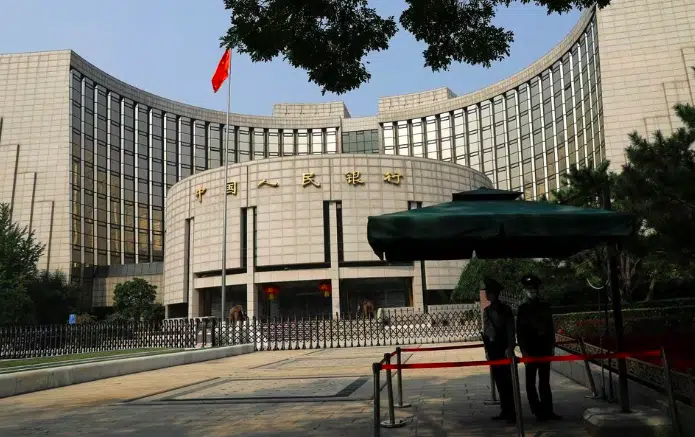China has opted to maintain its benchmark lending rates at their monthly fixing, aligning with market expectations. The People’s Bank of China (PBOC) has held the one-year loan prime rate (LPR) steady at 3.45% and the five-year LPR at 4.20%. This decision comes after the PBOC surprised markets last week by keeping its medium-term lending facility rate unchanged. Despite recent economic data highlighting the uneven nature of China’s recovery and deflationary pressures impacting real borrowing costs, the central bank has refrained from making adjustments to its lending rates.
The one-year LPR is a key benchmark for most new and existing loans in China, while the five-year rate influences the pricing of mortgages. The decision to keep these rates unchanged was largely anticipated, with a Reuters poll of 27 market watchers last week revealing that all but one participant predicted no changes to the LPRs. The central bank’s cautious approach is attributed to concerns about the depreciation of the yuan. Analysts suggest that any rate cut at this stage could exacerbate depreciation pressures, a scenario the PBOC aims to avoid. Instead, the central bank may continue relying on quantitative easing tools, such as pledged supplementary lending.
Downward pressure on China’s yuan has resurfaced in the new year, influenced by a resilient U.S. dollar and caution regarding the Federal Reserve’s potential delay in rate cuts. The onshore yuan has experienced a decline of about 1.3% year-to-date, reaching its weakest level in two months. Julian Evans-Pritchard, Head of China Economics at Capital Economics, believes that the PBOC may consider rate cuts once the yuan stabilizes. He predicts a 20 basis points reduction by the end of the second quarter, emphasizing that policymakers want to avoid additional depreciation pressure.
While the PBOC has opted to keep lending rates unchanged, market watchers anticipate liquidity injections ahead of the upcoming Lunar New Year holidays. During this period, cash demand typically rises for both corporates and households. Analysts suggest that the central bank might employ tools such as reverse repos in open market operations and could potentially reduce banks’ reserve requirement ratio (RRR) to address liquidity needs. The week-long Lunar New Year holiday is set to begin on February 10, and the PBOC is expected to implement measures to manage cash demand effectively during this period.

